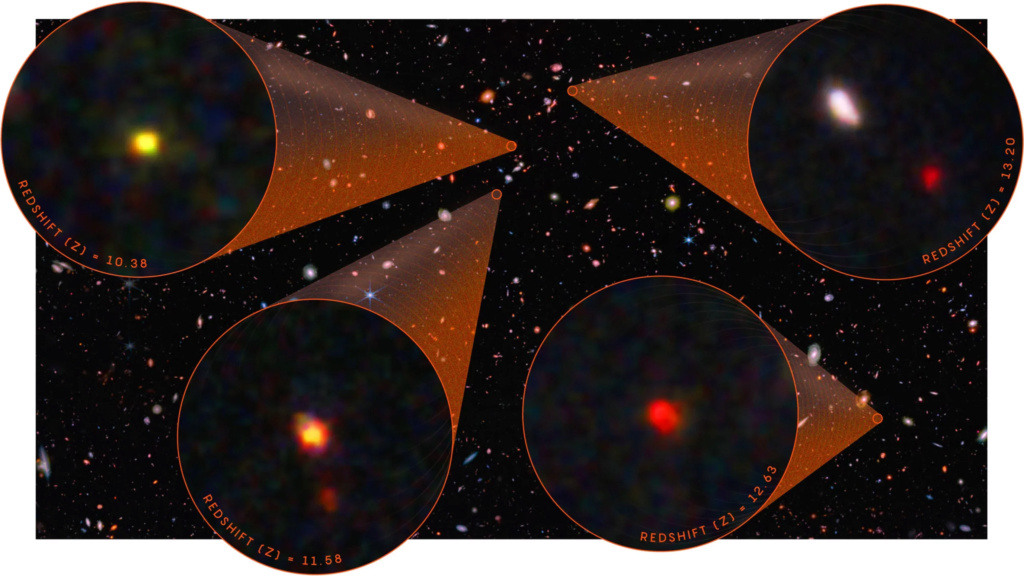James Webb monitors huge galaxies dating back to the early ages of the universe

It contains much more stars than expected
The existence of ancient galaxies of this size contradicts the current cosmic model that seeks to understand the structure of the universe
The James Webb Space Telescope has detected a group of huge galaxies dating back to the early ages of the universe , and it appears that they formed at a much faster rate than astronomers had expected, according to a study published Wednesday.
This discovery, which must be proven by detailed studies, occurred only 500 to 700 years after the Big Bang 13.8 billion years ago, i.e. in a very distant universe.
And discovered "James Webb", which entered service in July (July), this region thanks to his "Nircam" instrument, which monitors the near-infrared field not visible to the naked eye, and allows the telescope to observe the distant universe.
The telescope detected six galaxies much larger than scientists expected in the early stages of the universe, according to a study published in the journal Nature. The Hubble Telescope had previously observed two of these six galaxies, but the images provided by the telescope were not clear because the light emitted from them was weak.
Image analyzes taken by "James Webb" indicate that the six galaxies that have been called "candidates" at this stage because the discovery must be proven through spectroscopy technique, contain much larger quantities of stars than expected, while the number of The stars in one of them are 100 billion stars.

"This number of stars makes the galaxy similar in size to the Milky Way," says lead study author Ivo Labbe, adding, "This is crazy!"
It took our galaxy 13.8 billion years to form this amount of stars, while the old galaxy produced the same amount in only 700 million years, "20 times faster" than the Milky Way, according to Labe, a researcher from Swinburne University of Technology in Australia.
The existence of ancient galaxies of this size contrasts with the current cosmological model, which seeks to understand the structure of the universe. "According to the prevailing theory, the galaxies at those early ages are very small and are experiencing slow growth. It is likely that they contain 10 or 100 times less stars than the Milky Way," says the astrophysicist.
The mysterious dark matter that fills the universe may be the reason why the detected galaxies are forming stars so quickly. Although scientists are unable to monitor dark matter, they are well aware of how it works and know that it has a prominent role in the formation of galaxies.
"Dark matter clumps together to form a halo, which attracts the gas from which stars are born," Labbe said. However, this process takes a long time.
The discovery of the six galaxies may be an indication that "things accelerated" in the early universe "more than expected" for star formation, according to David Elbaz, an astrophysicist at the Atomic Energy Commission.

And the scientist adds, "This could be explained by the expansion of the universe, which is accelerating more than we thought."
This topic raises controversy among cosmologists, which makes James Webb's discovery "very interesting and a new indication that the current cosmological model is deteriorating," according to David Elbaz.
The researcher points out that the European space telescope "Eucld", which is scheduled to be launched into space this summer to try to uncover the secrets of dark matter, would contribute to clarifying this mystery.
Labe mentions the black swan theory, which indicates that the occurrence of an unexpected and unlikely event carries a great impact. "If one of the six galaxies is proven to be true, the theories" about galaxies will have to be revised, he says.
Source : websites

